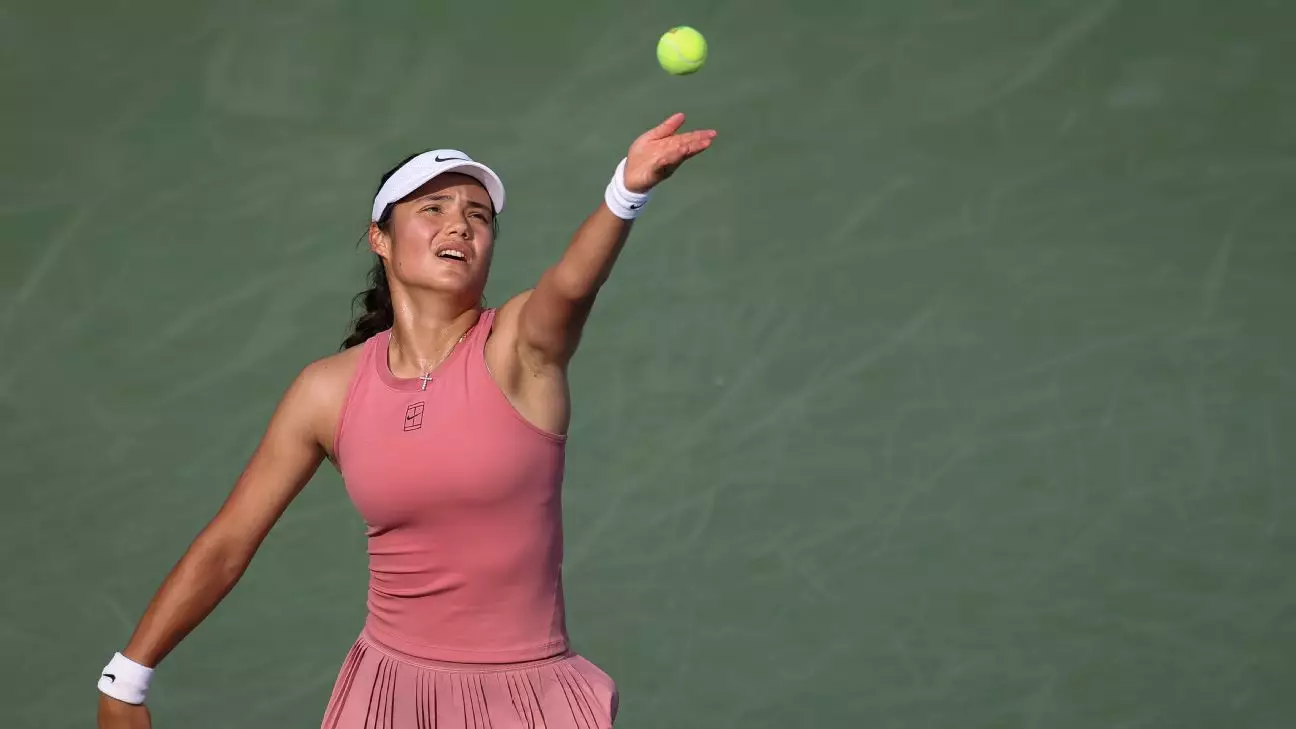Emma Raducanu’s recent victory at the DC Open signifies more than just another tournament win; it underscores her resilience in a sport that relentlessly demands consistency and mental toughness. Defeating Marta Kostyuk, a player enduring a daunting losing streak, Raducanu not only advanced but also demonstrated her capacity to capitalize on opportunities. Her success is emblematic of a trending shift in tennis, where emerging talents are increasingly capable of overcoming seasoned players experiencing slumps. The fact that Raducanu, ranked 46th, can topple higher-ranked opponents signifies her potent potential to ascend further in her career despite the unpredictable nature of professional tennis. Her upcoming match against Naomi Osaka or Yulia Putintseva promises to be a compelling encounter, highlighting how fresh talents are actively reshaping the competitive landscape.
The Vulnerable Giants: Injuries and Inconsistent Performance in Men’s Tennis
The men’s tournament at Washington reveals the fragility of even the most talented players when faced with injury and mounting pressure. Lorenzo Musetti’s early exit following his physical setbacks illustrates how injuries can derail promising trajectories, especially when facing energetic opponents like Cameron Norrie. Musetti, once seen as a rising star, has struggled to find form since his French Open injury, illustrating the tenuous nature of tennis careers that are often punctuated by physical setbacks. Similarly, Holger Rune’s withdrawal due to a back injury underscores the physical toll modern tennis inflicts on players, reminding audiences that peak performance often depends on fragile bodily health. These struggles highlight the importance of resilience not just in mental fortitude but in physical preparedness—a reality that can define or dismantle careers.
The Power of Experience: Venus Williams Defies Age Limitations
In stark contrast to the physical vulnerabilities faced by younger players, Venus Williams showcased her enduring prowess by securing a victory at age 45, becoming the second-oldest woman to win a tour-level singles match. Her win against Peyton Stearns reflects a compelling narrative of experience overcoming youth, challenging societal notions about aging and athletic performance. Williams’s dual success in singles and doubles at her age serves as an inspiring testament to the power of perseverance, training, and a relentless passion for the game. Her remarkable career longevity raises questions about how aging athletes can sustain excellence and whether the sport is evolving to better accommodate and celebrate such enduring determination.
The Future of Tennis: A Sport in Transition
These stories collectively portray a sport that is steadily transitioning—balancing youthful energy with seasoned resilience, grappling with injuries, and redefining longevity. Raducanu’s rising trajectory hints at a new generation ready to shake up established hierarchies, while the struggles of Musetti and Rune serve as stark reminders of tennis’s physical demands. Williams’s victory, however, anchors the narrative in history, emphasizing that experience and passion can sometimes outmatch physical prowess. As tennis evolves, it faces the challenge of nurturing young talent while honoring veteran champions who defy age and injury. The sport’s future lies in this delicate equilibrium where perseverance, adaptation, and youthful ambition coexist to shape a richer, more dynamic competitive landscape.


Leave a Reply